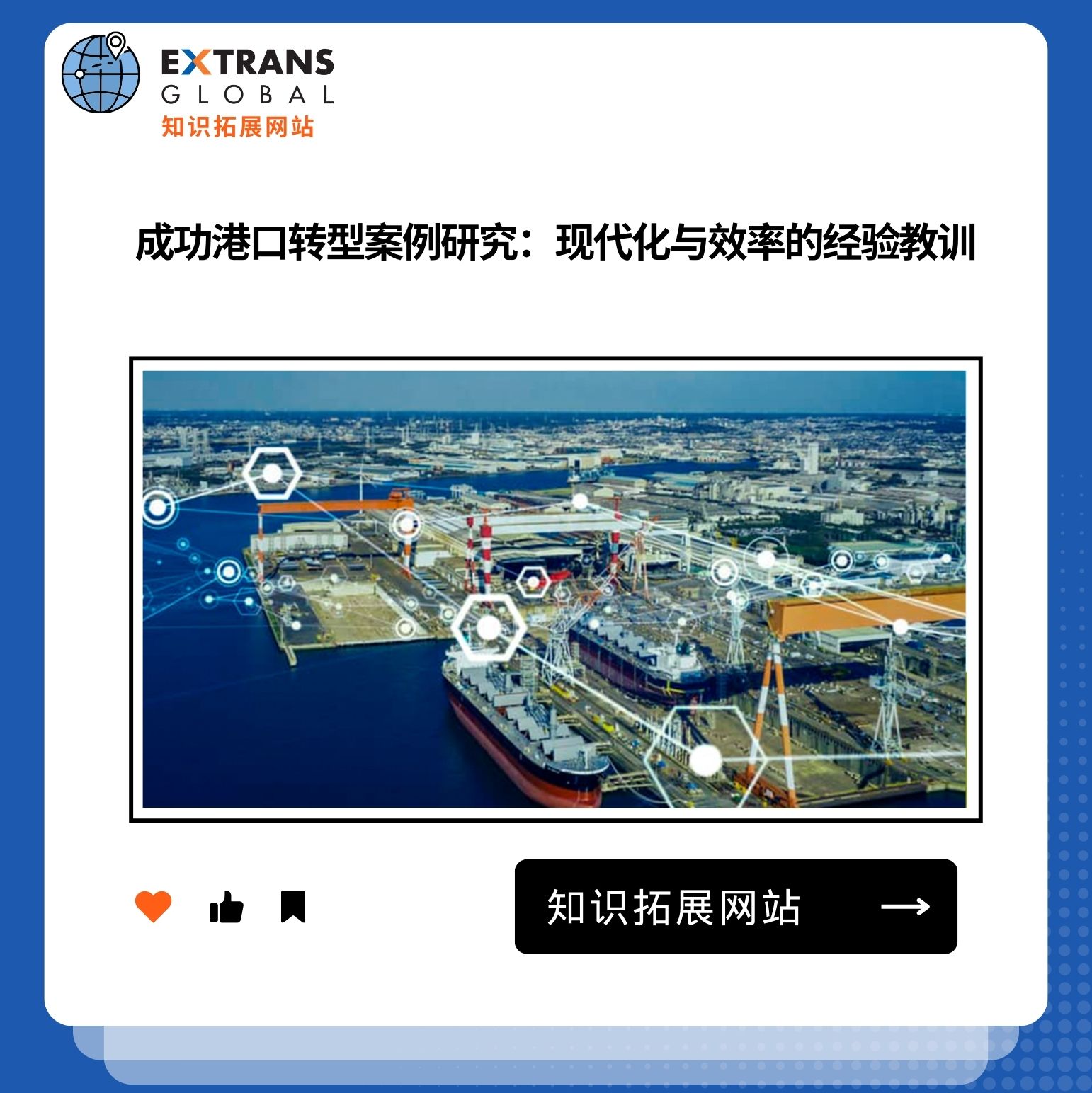成功港口转型案例研究:现代化与效率的经验教训

在全球贸易不断变化的环境中,港口作为货物和服务的门户,发挥着关键作用。随着对高效物流和可持续实践的需求增加,世界各地的许多港口已经经历了转型变化,以提升其运营。本文探讨了几个成功的港口转型案例,突出实施的策略和获得的经验教训。
1. 鹿特丹港:拥抱数字创新
鹿特丹港是世界上最大和最先进的港口之一,在数字创新方面取得了显著进展。港口当局认识到提高效率的必要性,启动了“未来港口”计划。该计划专注于将技术纳入港口运营,包括:
- 自动化集装箱码头:引入自动化起重机和卡车简化了货物处理,减少了周转时间和运营成本。
- 数据共享平台:港口开发了一个数字平台,促进利益相关者之间实时数据共享,改善决策和物流规划。
结果
这些创新使运营效率提高了25%,并显著减少了碳排放,使鹿特丹港成为可持续港口实践的领导者。
2. 洛杉矶港:绿色倡议与社区参与
洛杉矶港是美国最繁忙的集装箱港口,面临环境可持续性和社区关系方面的挑战。作为回应,港口实施了一项全面的可持续发展计划,包括:
- 清洁空气行动计划:该计划旨在通过过渡到更清洁的燃料和技术(如电动货物处理设备和低排放卡车)来减少空气污染。
- 社区外展项目:港口建立了与当地社区互动的项目,解决噪音、交通和空气质量等问题。
结果
由于这些努力,自2005年以来,洛杉矶港的柴油颗粒物排放量减少了50%,同时改善了与当地居民的关系。
3. 新加坡港:利用技术提升效率
新加坡港因其高效和战略位置而闻名。为了保持竞争优势,港口在技术和基础设施改进方面进行了大量投资:
- 港口运营管理系统(POMS):该系统整合了各种港口操作,实现了对船只、货物和设备的实时监控和协调。
- 智能港口解决方案:物联网(IoT)设备的采用允许更好地跟踪集装箱和资产,从而改善库存管理。
结果
这些技术进步使新加坡港实现了仅12小时的船只周转时间,成为全球最有效率的港口之一。
4. 汉堡港:促进多式联运连接
汉堡港成功转型,以增强多式联运连接。通过专注于综合运输解决方案,港口已:
- 开发铁路连接:加强与内陆目的地的铁路联系改善了通达性,并减少了公路拥堵。
- 建立物流园区:这些园区提供增值服务,如仓储和分配,促进更顺畅的供应链运营。
结果
这些举措使港口的货物吞吐量在过去五年中增加了25%,同时促进了可持续运输选项。
5. 安特卫普港:合作的典范
安特卫普港通过利益相关者之间的合作转变了其运营,包括航运公司、码头运营商和地方当局。关键策略包括:
- 单一窗口系统:该数字平台允许所有利益相关者共享信息和文件,减少延误,提高效率。
- 可持续性合作伙伴关系:与当地企业和社区合作开发可持续实践,增强了港口的环境表现。
结果
这些合作努力使港口用户的物流成本降低了30%,并提高了港口的整体竞争力。
结论:未来港口转型的关键启示
这些港口的成功转型为港口当局和希望提升运营的利益相关者提供了宝贵的见解。关键经验包括:
- 拥抱技术:投资于数字解决方案和自动化可以显著提高效率并降低运营成本。
- 关注可持续性:开发绿色倡议不仅有利于环境,还有助于改善社区关系,提升港口声誉。
- 鼓励合作:促进利益相关者之间的合作可以导致创新解决方案,使所有相关方受益。
随着全球贸易的不断增长,从这些案例中获得的经验教训将为希望现代化和适应物流和运输变化环境的港口提供蓝图。通过拥抱创新和可持续性,港口可以在行业中树立领导地位,确保其长期成功。

top



